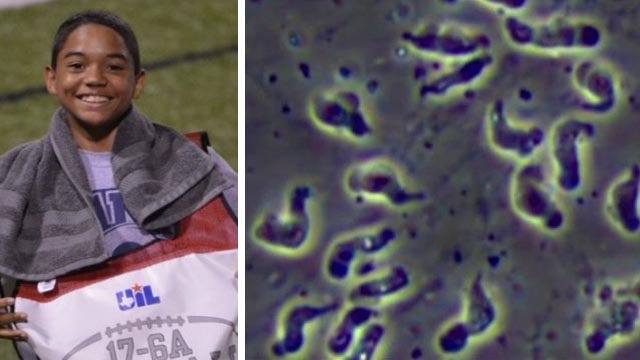Fourteen-year-old dies of brain-eating amoeba infection
The Texas teenager came in contact with the organism while swimming in a lake
One of this summer’s biggest health stories reads like something out of a science fiction novel: A brain-eating amoeba that resides in lakes and ponds, entering people’s bodies through their nostrils and ultimately killing them. Most recently, a 14-year-old Texas teenager who went swimming with his track team at a local lake was exposed to the organism known as Naegleria fowleri and died, despite being treated with an experimental drug.
Now more than ever, changing environmental factors are making these microbes more prevalent in our swimming waters. The drought in the Western states and high temperatures in the South are creating very hot conditions and in turn water has become a scarcity. This has created a scenario in which deadly amoebas, as well as plague-carrying rodents, are migrating from drought-afflicted areas of California and other states to different parts of the country in search of water. It has become imperative for humans to practice water safety, and to seek immediate help if they develop any suspected symptoms.
While the amoebae do not affect everyone who enters the water, for the few that are sensitive to the organisms, the consequences are nearly always fatal. The amoeba gets up the nose, burrows up into the skull and destroys brain tissue.
Over the next few days, the infected person exhibits signs and symptoms of meningitis, such as fever, headache and stiff neck, before falling into a coma and eventually dying.
This condition is rare, and there is no need for mass alarm. There have only been 133 reported cases in the United States since the amoeba was identified in 1960.
However, given the fatality rate of this condition – only three people have ever survived – I don’t think it hurts to exercise some caution.
While the best prevention is obviously to avoid swimming in any body of freshwater to begin with, I realize this is an unrealistic expectation. I do recommend avoiding shallow water that has been thoroughly heated by the sun, all the way down to the bottom. Amoebae are less likely to be found in deeper water where you can feel that the temperature at the bottom is cooler than the top.
Also, make sure to plug your nose when jumping or diving into water and avoid excess splashing. These simple measures can all decrease the likelihood of amoebae entering the body.
